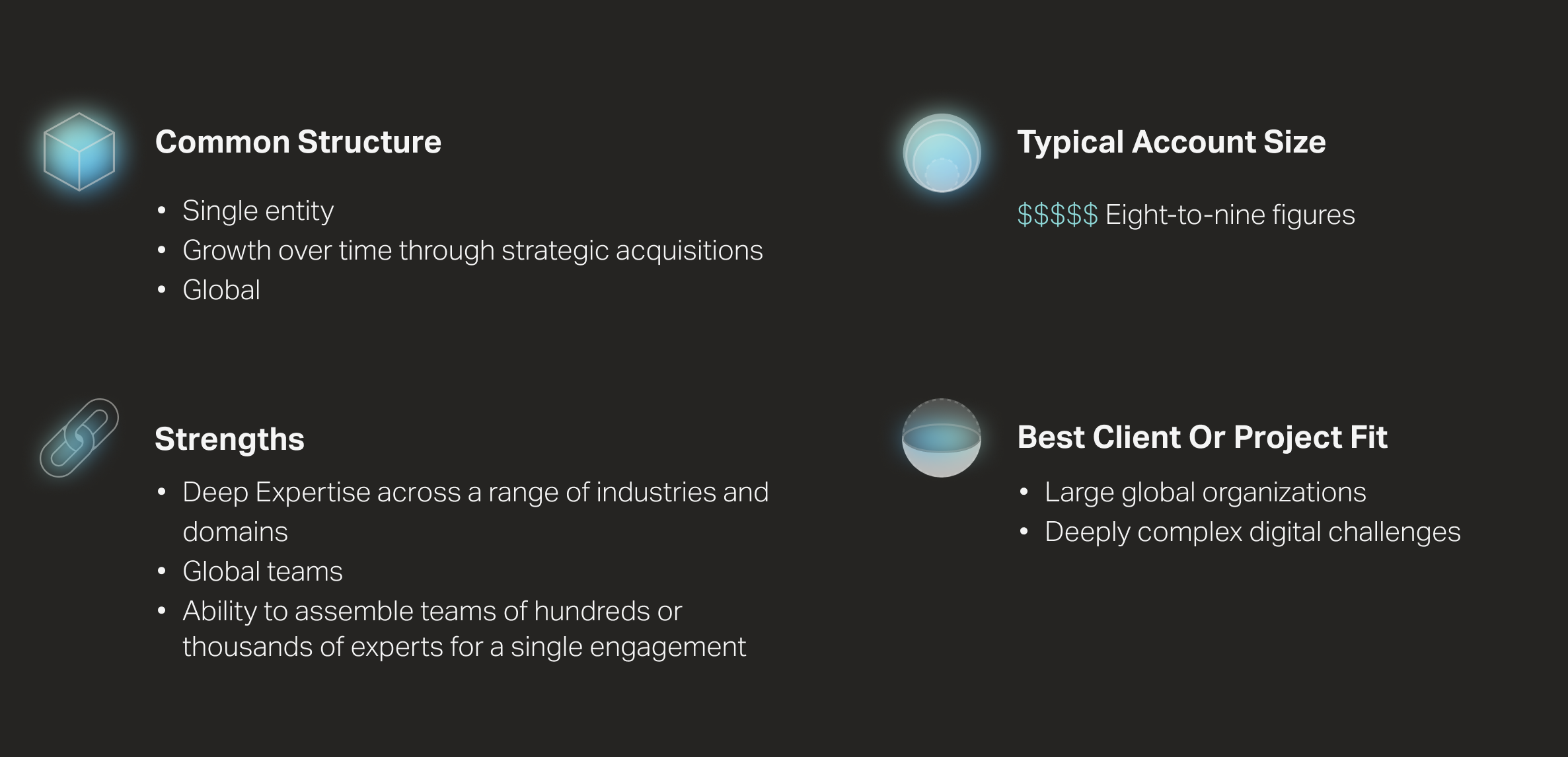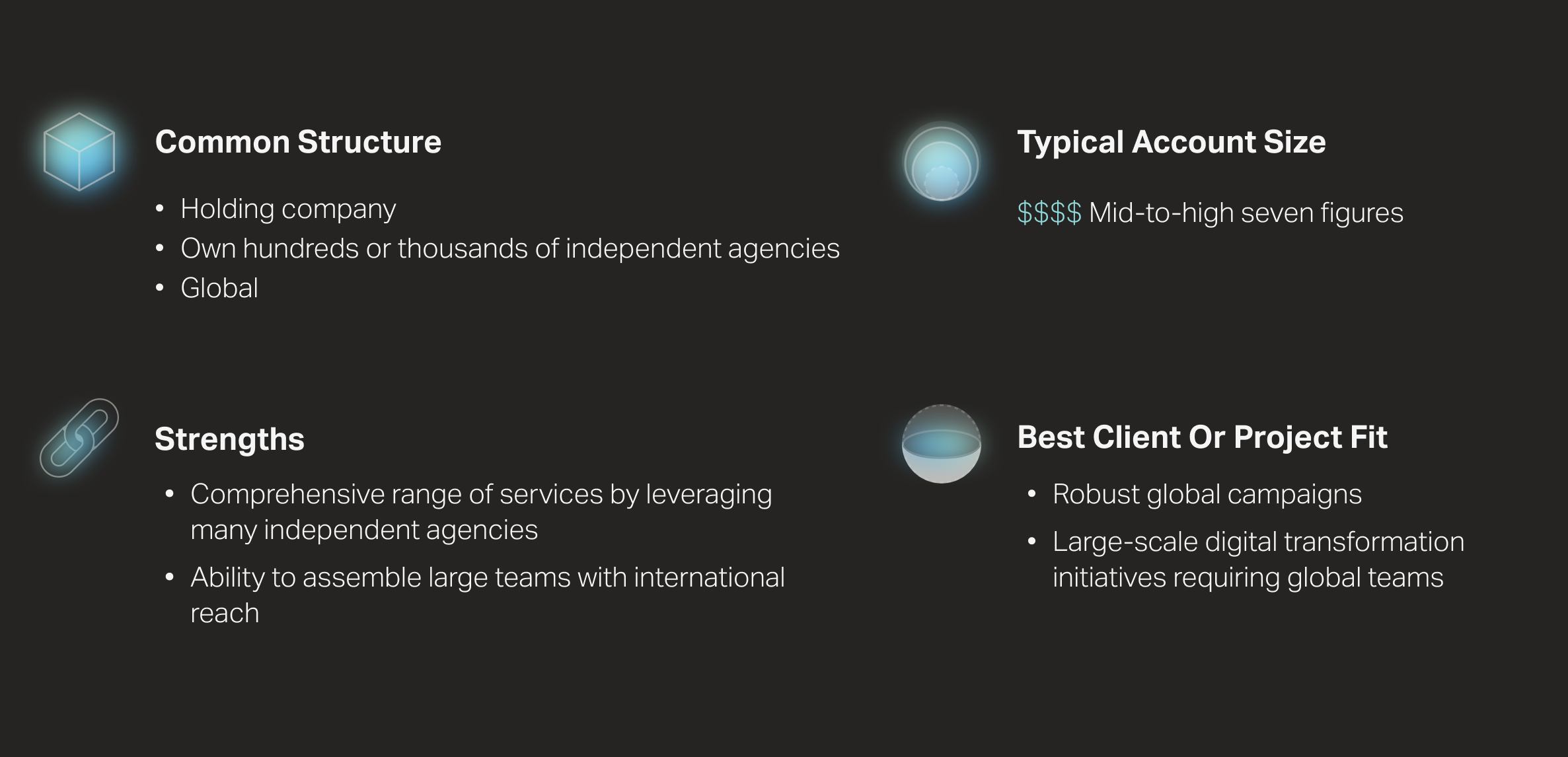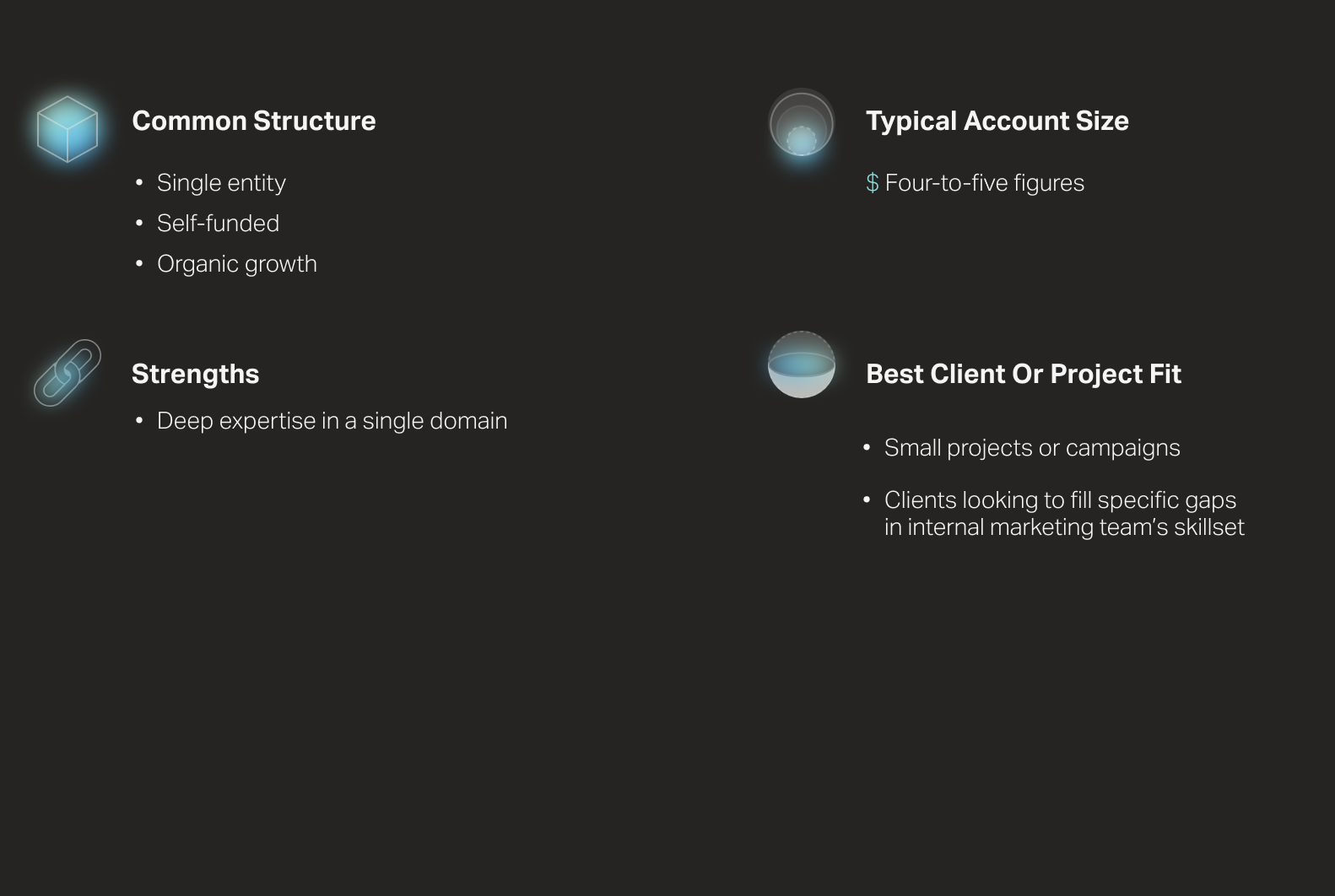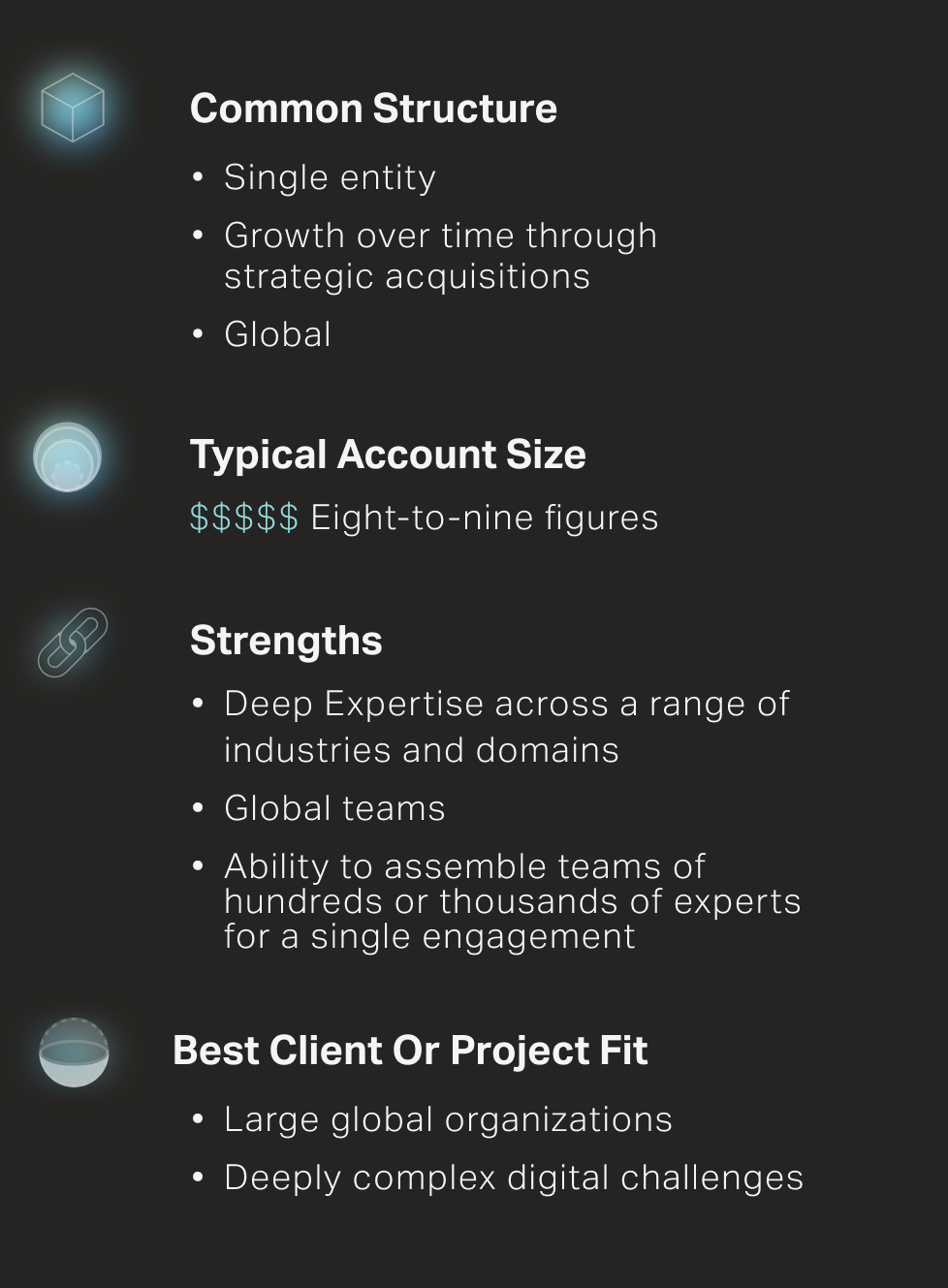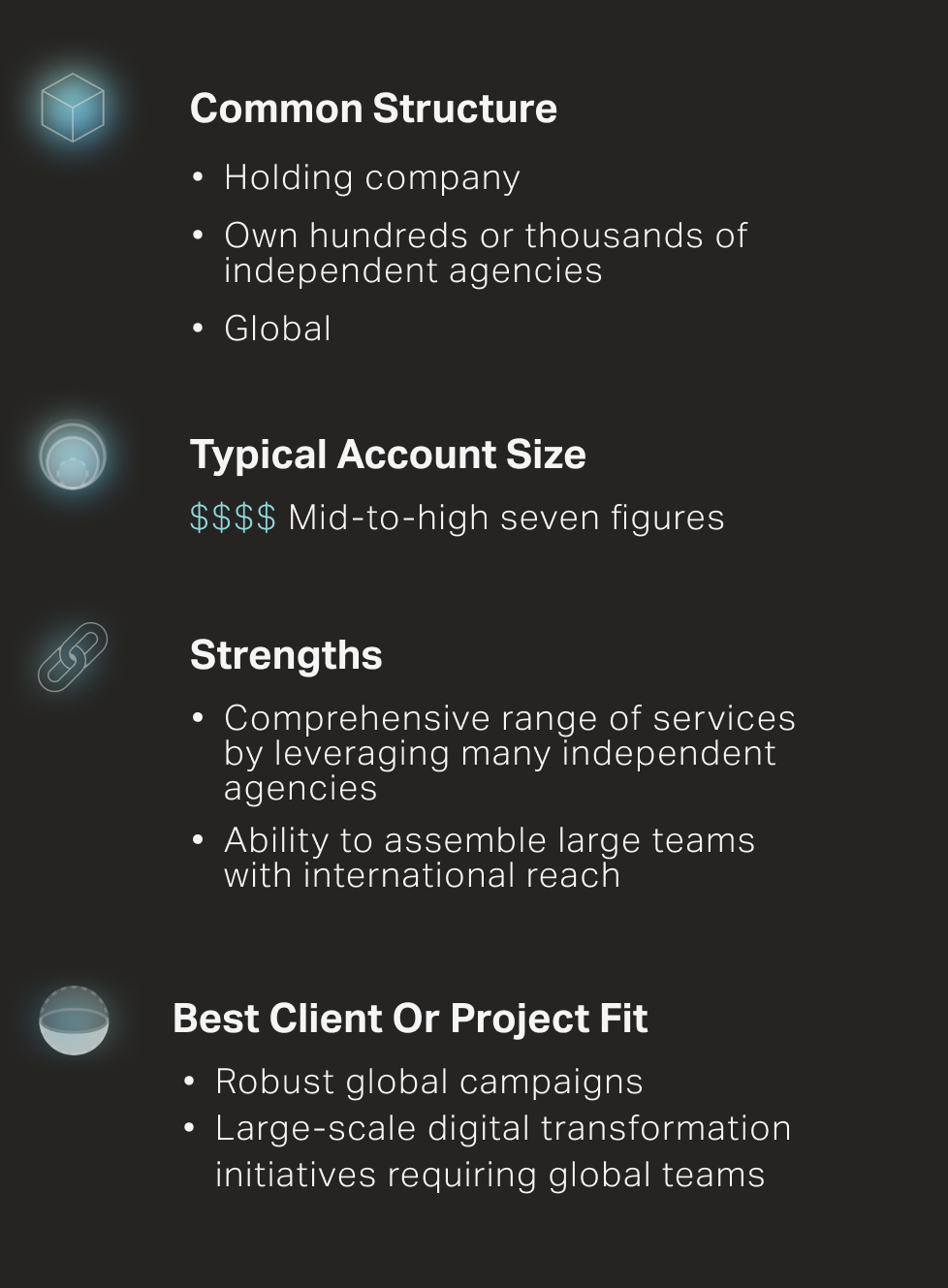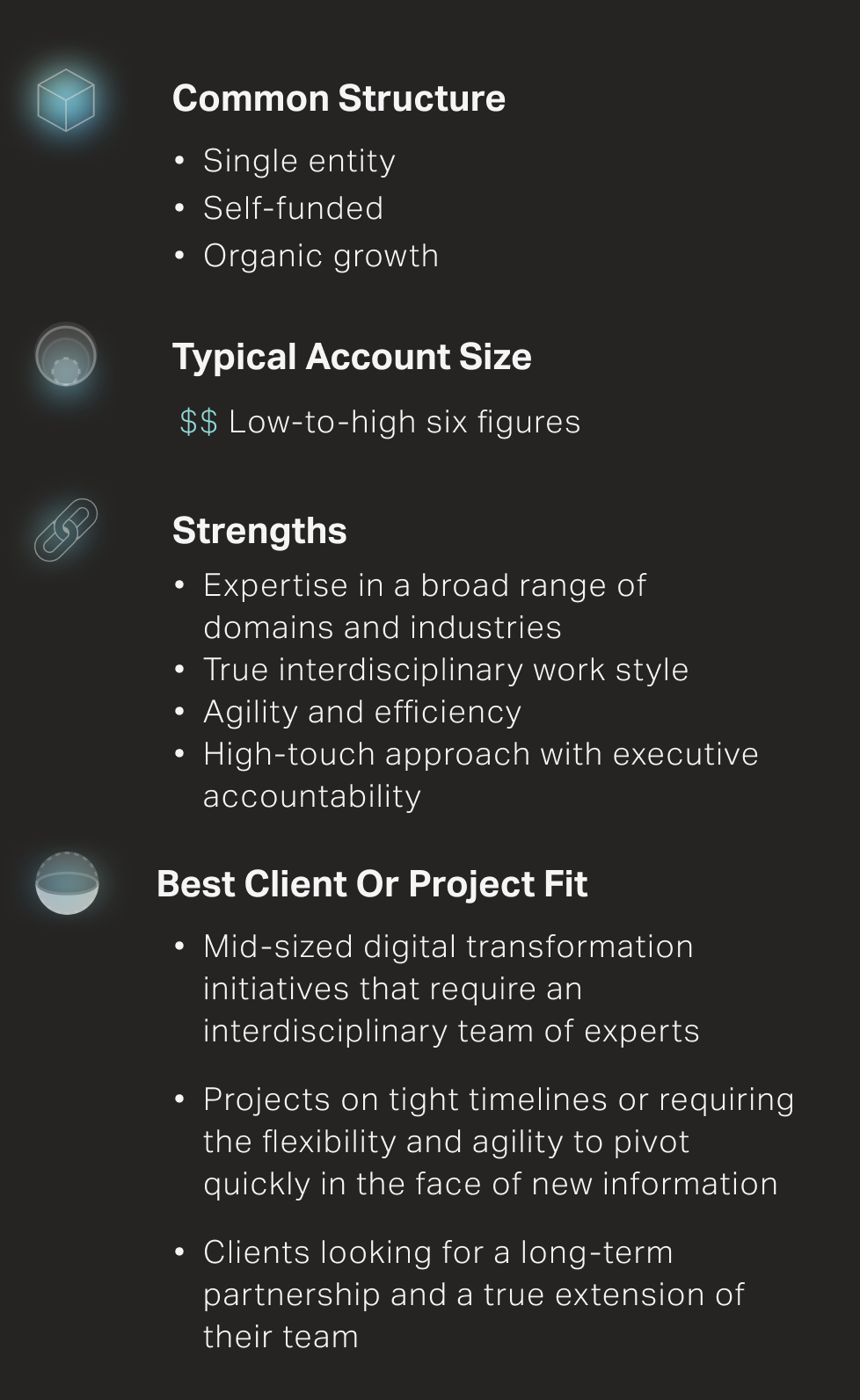But as the weeks turn into months, your excitement about your chosen agency partnership turns to frustration. The impressive A team that pitched you is replaced by a revolving door of B and even C players. What began as a promising partnership transforms into a disheartening scenario characterized by lackluster deliverables and transient triumphs that fail to address the fundamental drivers of growth for your organization — and you’re left puzzled, trying to make sense of this unforeseen shift in circumstances.
In today’s digital landscape, the need for an agency partnership model that drives successful growth is becoming imperative. The complexity of digital programs is only intensifying, and the onus on CMOs to deliver quantifiable outcomes is becoming more amplified. The modern CMO is expected to be a visionary leader, a knowledgeable expert in an array of ever-evolving marketing technologies and trends, and a digital orchestrator, capable of harmonizing diverse teams, technologies, and strategies to drive overall digital programs that fuel growth — all while being held accountable for the company’s bottom line. In fact, McKinsey reports that 78% of CEOs rely on their CMOs and marketing leaders to drive growth.
When faced with high stakes, numerous challenges, and a range of complex solutions, no CMO can do it all alone. And agency partners must be agile and equipped to pivot quickly when client needs change due to rapidly evolving markets and customer needs. “Growth is a team sport,” strategist Ryan Stoner says aptly in a recent article in Forbes. “Best practices of world-class agency 3.0 include an understanding of both upstream (strategic) and downstream (tactical) marketing with processes or guidelines that establish shared ownership among all roles and functions.”
Finding the right agency partner to navigate is crucial — but despite a vast sea of options, it remains a difficult task. And when you make the wrong choice, the expense and impact of starting afresh in search of a new agency partner can be formidable.
So how do you avoid frustrations like the scenario described above? The answer may surprise you: Start by understanding an agency’s business structure.
Here, we provide a behind-the-scenes peek at the different types of digital agencies and how their structure can impact your partnership.
The Digital Agency Landscape
There are countless digital agencies to choose from, and the type of agency you select will be based on your unique business needs. Before we dive beneath the surface, let’s take a look at five types of agencies that comprise the digital agency landscape, their business structures, typical account sizes, strengths, and best fit for different clients:
The Digital Agency Landscape
There are countless digital agencies to choose from, and the type of agency you select will be based on your unique business needs. Before we dive beneath the surface, let’s take a look at the five types of agencies that comprise the digital agency landscape, their business structures, typical account sizes, strengths, and best fit for different clients:
Exploring the Relationship Between Agency Business Structure and Client Outcomes
Global Consulting Firms and Global Holding Company Agencies
Typically it’s crystal clear if only a massive global consultancy or agency will suit your needs. Typically, you will need to partner with a large global firm if you are embarking on a multi-year project involving business and digital transformation at the core, and requiring teams of people working across multiple workstreams and divisions and numbering in the hundreds or even thousands.
But the decision-making process becomes murkier when you’re choosing among mid-sized VC- or PE-backed agencies, independent boutique agencies, and specialized single-service agencies. While these agencies all seem to play on the same field, the experience and outcomes of working with each type can be vastly different.
Mid-sized VC- or PE-backed Agencies
Many mid-sized agencies are known for growing through VC funding and private equity, with the intent of being bought out by a global holding company agency in a short amount of time.
Why does this matter? Because this structure can influence:
1. The likelihood the agency will take on your project (or keep it)
2. The team they will assign to your project
3. The level of attention they will give to your project
4. The methods they will use to engage with your project
To better illustrate the above impacts, we’ve broken them down into four common scenarios that clients encounter when their accounts are managed by mid-sized VC- or PE-backed agencies.
When agencies are backed by VC- and private equity–funding, the expectations for growth are high and fast. To meet these expectations, it’s not practical to take on many small clients. Instead, these agencies limit themselves to larger deals, focusing on adding a handful of seven-figure clients per year, for example, rather than engaging with a multitude of six-figure clients.
Agencies that aren’t beholden to investors often take on accounts for reasons other than revenue. Agency search consultant and Forbes blogger Avi Dan explains: “founders of an agency, when working with their own agency’s money, are far more likely to invest, to take a chance on a small account for the creative opportunity.” As an agency founder, I can think of many times when we’ve chosen to give rather than get, if the decision could help achieve results for our client or contribute to the greater good of their program and vision. But when agencies must justify every decision to investors, they may decline to work with you despite the opportunity or relationship you offer them.
Even when they do accept your project, there could be a hidden catch that catches you off guard: You may need to maintain your initial level of spending to sustain the relationship.
The truth is, significant investor involvement often forces agencies to fix their gaze on quarterly revenue and margins rather than on nurturing long-term client relationships. The result for you? If your business experiences any bumps the road that may require a temporary reduction in services and spending, your agency may need to part ways with you.
Losing your hard-earned agency partnership can be a tough blow, leaving you in search of a new agency and starting from scratch.
This is a tale as old as time. When an agency pitches you, they’ll bring out their top guns — their cream of the crop, their best and brightest. These are the people who have the experience, the portfolio, and the pizzazz to wow you. They’ll make you feel like you’ve hit the jackpot.
But once you sign on the dotted line, you’re in for a rude awakening. The team you’re assigned is nothing like the one you met during the pitch. They’re simply not the seasoned pros you were promised. Instead, you’re stuck with newcomers who just graduated from college and are still trying to find their footing in the industry. It’s not their fault — they’re doing their best. But let’s be honest: You’re not paying big-agency dollars for a team of novices who are still learning the ropes.
You’ve signed the paperwork, agreed to a timeline, and set a budget. You’re excited to work with a well-respected agency that boasts a portfolio of impressive clients. But when the time comes to kick off the project, you quickly realize that you’re not getting the top-tier attention you were expecting.
Communication becomes sparse, progress updates are few and far between, and potential blockers are left unaddressed. When deadlines are missed and goals aren’t met, you’re left scratching your head, wondering why your team didn’t get the job done.
But here’s what happened: Not getting your agency’s top talent means you’re also not getting significant attention from leaders who understand the bigger picture, including the market you operate in and how and when to pivot to manage all the moving parts of your program in the most effective way to achieve your goals. Now you’re left picking up the pieces and spending more money to fix problems you didn’t even know existed.
VC- and private equity–funded agencies possess large teams of experts that can be summoned to tackle your challenges. Nonetheless, when their expectations for growth are substantial and immediate, they can’t afford to engage personnel in your project at times when their area of expertise doesn’t precisely align to the matter at hand.
Instead of receiving a dedicated, interdisciplinary team that’s fully engaged in your project from start to finish, you’ll likely get small teams working in silos and passing off parts of your project like a game of tag. For instance, designers may be occupied designing for another client while voice and tone specialists develop your brand voice. Meanwhile, developers may be working on another project while designers create your website comps. Although this approach may boost the agency’s efficiency, it’s not in your best interest. Important insights from different disciplines may be overlooked, and details and understanding of your challenge and business may be lost in translation.
When agencies are under pressure to complete projects hastily and move on to the next client, they may focus their experts on creating dots efficiently rather than connecting them effectively — and you could miss out on significant opportunities for growth.
Mid-sized VC- and private equity-funded independent agencies do have advantages. They often possess teams of skilled experts that can efficiently execute mid-sized digital transformation initiatives. They also likely have good intentions — certainly they aren’t aiming for mediocre services.
However, the truth is that every decision made by agencies in this category is deeply connected to and determined by revenue goals. To be sure, there are no agencies that are truly unconcerned with revenue, and you may experience the above scenarios whenever you aren’t a top-tier client, regardless of the agency type. However, the challenges presented by revenue considerations are amplified when an agency must answer to investors who require hyper-aggressive growth. Often, investor interests are served with more fidelity than client interests.
Specialized Single-service Agencies
The next agency category is specialized single-service agencies. These agencies live and breathe a singular focus, whether it be brand, creative design, content marketing, systems integration, media, or any other number of services. While some of these agencies are backed by investors or acquired by larger players, many operate on their own terms, with self-funding and a more relaxed growth trajectory. This allows them to maintain their focus and avoid the same pressure to scale that mid-sized VC- or PE-backed agencies experience.
When it comes to finding the right agency for your marketing needs, specialized single-service agencies can be a savvy choice. These nimble players can help fill in the gaps in your marketing team and complement your current operations. However, it’s important to be mindful of their razor-sharp focus, which can sometimes lead to siloed thinking and ways of working that don’t align with your larger growth objectives.
While you might get killer creative design and content marketing that drives engagement, here are some scenarios you might also experience:
You’ve probably been in this situation before. You hire a specialized single-service agency to take on a specific project, only to find that your needs quickly expand beyond the scope of what that one agency can offer. It’s a common scenario, and many businesses fall into it without even realizing it. Before you know it, you’ve stacked more and more agencies together, each working in their own silo toward a common goal.
Each individual agency may be fantastic at what they do, but here’s the thing — sometimes they don’t have the big picture in mind. They may lack the kaleidoscope of perspectives necessary to truly align with your larger growth objectives and understand how their service fits into the broader orchestra of your business. When you’re working with multiple agencies and you take a step back, sometimes you find that you’re not building a harmonious symphony, but rather a cacophony of noise.
For example, imagine you’re in the market for a brand refresh, and you have an idea about where you want to go, but you’re not sure how to get there. You think hiring a branding agency is the best way to get there, right? After all, that’s their bread and butter. They create a beautiful brand book and help you define your brand’s purpose, mission, and values. But what happens when you reach your destination and you’re left wondering, “what do we do now?”
Clients frequently come to us in this exact position. They love the brand book, but don’t know how to bring it to life out in the digital and physical wild. And let’s face it — a lovely brand book is not going to get you very far in today’s market. But activating your brand, making it come to life in a strategic way, that’s a whole different ball game. It requires more than just a branding agency.
Companies often turn to a CX agency to help activate their brand at this point. But here’s what happens: The CX agency quickly discovers that the branding agency didn’t consider certain channels and activations. They’re left with a puzzle that doesn’t quite fit together, and they’re forced to either redo some of the brand work or hastily create new elements that don’t align with the original strategy. It’s a mess, and it’s not just frustrating, it’s expensive too. (By the way, do you have the right marketing technology platforms to drive personalization and analytics around the CX activations? No? You might need to hire another single-service agency to help you with that …)
While it’s true that stacking specialized single-service agencies together can work in some cases, more often than not, the agencies don’t play in tune — or even at the same concert — which leads to a digital supply chain of bottlenecks that hold you back from achieving your growth objectives.
We all love a good playbook, don’t we? Agencies of all types and sizes are eager to create and utilize playbooks, and clients are equally fond of them. Playbooks offer valuable efficiencies and demonstrate that the agency has the necessary expertise to develop a clear and effective methodology. When used as a guiding framework rather than a rigid set of rules, they can help pave an efficient and straightforward path to achieving your desired outcomes.
However, sometimes playbooks are all fun and games — until the plays are revealed. It’s not uncommon to discover that the playbook was built more for the agency’s benefit than for the client’s.
For specialized single-service agencies with limited expertise outside of their domains, playbooks can either codify their methodology or serve as a rigid set of rules that constrain them from offering customized services tailored to the unique nuances of your organization. Without knowledge beyond their specialized domain, they may miss crucial opportunities to flex outside of their playbook to achieve your goals.
One of our clients had worked with a branding agency that relied too heavily on a playbook for parts of their process. When they partnered with us a few years later for a brand refresh, they noticed a significant difference in how our interdisciplinary team approached their brand strategy:
“What BRINK is doing is not cookie-cutter. You really mold your approach to our needs and who we are, rather than expecting us to mold ourselves around you and your methodology. The other agency did really good brand design work with respect to logos, typography, and colors — they brought our three companies together in ways we needed at the time and gave us the tools to be consistent with our brand elements. But when it came to trying to define our values and who we were, it was like they were just trying to funnel us down these predetermined paths, driving us toward something they had already defined. It was really uncomfortable. The spirit of it was like, ‘we’re going to show you who you are,’ instead of ‘we want to learn who you are.”
—Gernot Burmeister, Vice President of Sales and Business Development, DynaEnergetics
Sometimes the limitations of specialized service agencies cause them to rely too heavily on one methodology in a playbook instead of delivering customized services that take each unique client situation into account. It’s important that your agencies not only play in tune together, but have a deep understanding of how their role fits into your larger organizational objectives — and can pivot and adapt their approach as needed to achieve those objectives.
For specialized single-service agencies with limited expertise outside of their domains, playbooks can either codify their methodology or serve as a rigid set of rules that constrain them from offering customized services tailored to the unique nuances of your organization. Without knowledge beyond their specialized domain, they may miss crucial opportunities to flex outside of their playbook to achieve your goals.
One of our clients had worked with a branding agency that relied too heavily on a playbook for parts of their process. When they partnered with us a few years later for a brand refresh, they noticed a significant difference in how our interdisciplinary team approached their brand strategy:
Sometimes the limitations of specialized service agencies cause them to rely too heavily on one methodology in a playbook instead of delivering customized services that take each unique client situation into account. It’s important that your agencies not only play in tune together, but have a deep understanding of how their role fits into your larger organizational objectives — and can pivot and adapt their approach as needed to achieve those objectives.
Independent Boutique Agencies
We’ve covered how mid-sized VC- or PE-backed agencies experience constant investor pressure, and how specialized single-service agencies risk limited success due to narrow focus. We believe this is where the power of independent boutique agencies can shine. Boutique agencies bring together deep collaborative relationships and a range of disciplines — from brand and customer experience to technology, personalization, and analytics. This full integration allows boutique agencies to craft and activate a seamless and effective digital strategy that aligns with client growth objectives — and to offer the agility businesses need to pivot in the face of shifting priorities and marketing technologies.
Independent boutique agencies like BRINK Interactive are a rare breed in today’s agency landscape, and like the other agency types, their business structure plays a pivotal role in how they deliver.
As an independent boutique agency, BRINK is completely self-funded and beholden only to our clients. This business structure allows us to prioritize deep relationships with every client and offer executive accountability on every project.
Yuji Minegishi, general manager at Gigaphoton Inc., has worked with a number of boutique agencies and larger VC- and private equity-backed agencies across his career at HP and Gigaphoton. He’s always preferred to work with boutique agencies because of the personal and collaborative nature of the relationship, which he describes here in the context of his relationship with BRINK:
Patrick Armstrong, president–Americas at DynaEnergetics, describes his relationship with BRINK this way:
This combination of interdisciplinary expertise, accountability, and accessibility is something that’s not found anywhere else in the agency landscape. It’s a critical part of the BRINK origin story and our desire to build a fully independent and integrated agency that puts client needs first.
Finding the Right Agency Fit
We’re proud of the unique value that our independent boutique agency structure provides to our clients. We’ve seen firsthand how our interdisciplinary approach and executive attention can drive growth and success for businesses.
But the truth is, an independent boutique agency isn’t always the best fit for every business. Sometimes a different agency structure might be a better match. That’s why we want to empower you with behind-the-scenes knowledge that few clients know to consider when vetting agency partners.
Want to learn how to avoid some of the pitfalls described in this article and select the right agency for your needs? Read 5 Questions to Ask When Vetting a Digital Marketing Agency for insights on the uncommon questions you should ask prospective agency partners.
Are you wondering if a boutique agency will offer the right partnership for you?
Start a conversation with BRINK — we’d love to hear your story.




